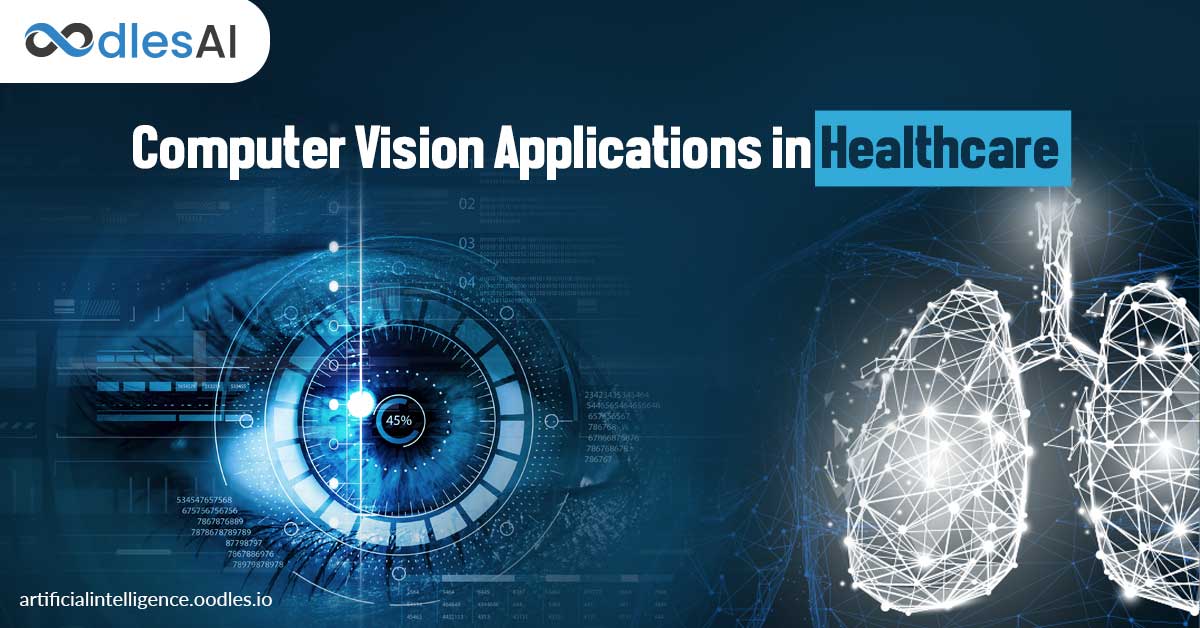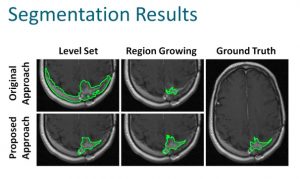Improving Diagnosis with Computer Vision Applications in Healthcare
Sanam Malhotra | 20th March 2020

Artificial Intelligence (AI) is showcasing transformative potential to streamline and improve therapeutic and healthcare practices. From predictive analytics to computer vision, AI technologies are breaking through traditional medical techniques to accelerate and scale multiple treatments. In an attempt to contribute to the current pandemic, Oodles AI is exploring how computer vision services can advance healthcare facilities effectively. Here are some data-driven computer vision applications in healthcare that deploys machine learning algorithms for diverse medical purposes.
1) Medical Image Recognition
From X-rays to CT scans and MRIs, medical professionals are required to examine complex images to analyze patient health and initiate diagnosis. Diagnostic imaging techniques are critical for qualitative as well as quantitative visual assessment to deliver various healthcare services. However, manual efforts are inefficient at identifying microscopic anomalies in medical images accurately.
The advent of AI has revolutionized image processing technologies such as computer vision. Leading providers of artificial intelligence services are innovating traditional practices with computer vision for optimizing and scaling treatment across specialties. Computer vision is beginning to replace traditional image processing techniques with neural networks to automate the following medical processes-
a) Colonoscopy image analysis
Traditional colonoscopy tests involved a manual search to detect polyps in the large intestine that consumed more time and cost. With computer vision technology, doctors are training fully convolutional networks (FCN), to analyze internal organs for better and more accurate results.

Barcelona research and innovation center demonstrates how computer vision-powered image recognition works for endoscopic analysis.
b) 2D Image Processing
Computer vision is also achieving considerable success in processing complex 2D images including bony fractures, malignancies, subclinical bone material changes, etc.

Medical analysts at the Hebrew University, Israel employed Convolutional Neural Networks (CNN) to detect bony fractures.
In contrast to lengthy traditional methods that consumed hours or even days in assessing 2D images, with AI-powered computer vision, physicians can detect in-bone fractures within minutes.
Also read- How Artificial Intelligence in Healthcare is Redesigning Treatment
2) Process Segmentation of Medical Images
Image segmentation is one of the most essential medial processing practices used to extract the region of interest (ROI) in body organs or tissues.
Over time, simple equations are turning obsolete at modeling crucial objects such as lesions and anatomy in medical images accurately. Advancements in machine learning algorithms are breaking the barriers across indispensable medical imaging processes such as-
a) Computer-aided diagnosis for lung, breast, and liver cancer along with acute and chronic diseases.
b) Medical ultrasound for diagnosis and assessment of internal body structures
c) MRI or Magnetic Resonance Imaging reconstruction to remove image noise and process easily interpretable images for clinical uses.
d) Brain tumor segmentation for accurate tumor volume measurement.

Practitioner at the Center for Research in Computer Vision, Florida observed notable efficiency for brain tumor segmentation using computer vision techniques against traditional segmentation tools.
Computer vision employs machine learning for model training based on patterns and logic. Therefore, computer vision applications in healthcare are witnessing a high demand from medical institutes to accelerate process segmentation and other image processing tasks.
Also read- Healthcare Chatbot Development With Dialogflow: Reshaping Diagnosis
Deploying Computer Vision Application in Healthcare with Oodles AI
Amidst the global coronavirus outbreak, the healthcare industry worldwide is experiencing tremendous pressure to ideate and innovate on a large scale. Various data analysts and researchers are taking technological initiatives to contain the spread of the disease with rapid and accurate detection techniques.
With computer vision technologies, medical practitioners can channelize patient data to extract actionable insights and analytics. We, at Oodles AI, are combining our experiential knowledge in AI technologies to contribute toward the COVID-19 pandemic and other chronic diseases with the following capabilities-
a) Image and object recognition of medical images, such as X-rays, CT scans, and MRIs
b) Image restoration and reconstruction
c) Predictive analytics for complex datasets
d) Content-based image retrieval, and more.
Explore how Oodles AI deployed cloud-based machine learning models to build automated Diabetic Predictive System. To learn more about our artificial intelligence services, reach out to our AI development team.



